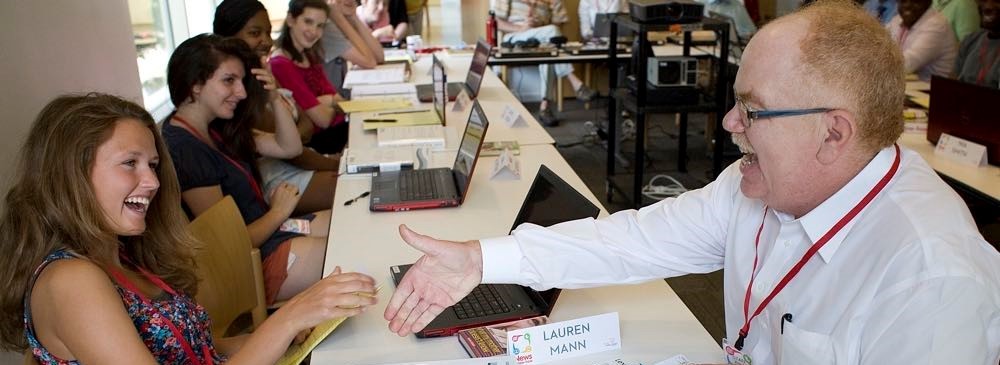
NLP journalist volunteer Paul Saltzman dissects news judgment
Paul Saltzman, the investigative news editor at the Chicago Sun-Times, has a simple answer when asked whether the public has a solid understanding of what “news judgment” means.
“No,” said Saltzman, who has volunteered with the News Literacy Project since 2011 and is the host of the “What Is News?” lesson in NLP’s Checkology® virtual classroom. “People tend to understand how their own worlds work, but not so much how other people’s worlds do.”
Saltzman, who joined the Sun-Times in 1999 and has held a variety of positions in the newsroom, used an example from his reporting days to illustrate how we can be unaware of the fact that what is second nature to us can mystify others. He was interviewing a neurosurgeon who explained for over an hour, in detail, a relatively new type of brain surgery.
But the surgeon left out the first step: how he opens a patient’s skull to reach the brain.
“So I asked,” Saltzman said. “‘I know this has to be the most elementary thing to you, but how do you get through the skull to do that?’ And he said, ‘With a drill — actually, one that’s kind of similar, though far more delicate and specialized, to the drills you might use in woodworking.’”
A moment of clarity
That experience helped Saltzman realize something about his own profession and the importance of teaching young people how journalism actually works.
“What we do is hardly brain surgery,” he said. “But I’ve found that most people who don’t do this work for a living have as little clue about how we do it as I did about doing brain surgery.
“And why would they — unless we do something to help them see, preferably at an age when their views on things haven’t begun to harden yet, that it matters?” he said. “And it matters even if they’re never going to be journalists themselves.”
His advice for students as they wade through the massive amounts of information they encounter every day? “First, pay attention. Read and watch a lot of news — because even if journalists aren’t trying to spin you, one might view a particular aspect of a story as the most important or most interesting and another might see things very differently.”
Next, he said, “Look at sourcing. I would advise anyone to look at news stories a little like I do — trying to take them apart and figure out where and how the reporter got the information that’s being presented so you can get a better idea of whether that’s trustworthy information.”
The ‘Big Four’
A lot has happened in the world of information since Saltzman began volunteering for NLP eight years ago. Social media has exploded as a conduit of both fact and fiction. There have never been more voices and more sources of information (and misinformation).
So what, in 2019, is actual news? What needs to be reported to the public, and what should be ignored? That is at the center of “What Is News?,” in which Saltzman asks students to imagine that they are journalists and have to decide, out of everything that is happening on a given day, “what counts as ‘news’ that day.” The lesson guides students through an exercise in which they try to identify which of two events is more newsworthy.
Saltzman concludes the lesson by going over what he refers to as the “Big Four” factors of news judgment:
- How timely is it?
- How important is it for the public?
- How interesting is it?
- Is it unusual enough to warrant attention?
“If something happens every day, then it stops being news,” Saltzman says in the lesson. “If dog bites man, that’s not news. If man bites dog — now that’s news.”
This decision-making process — determining what, exactly, is “news” on any given day — is, to Saltzman, one of the biggest misunderstandings the public has about journalists: that the topics, events or people that are reported on are chosen because of a reporter’s or an outlet’s interests.
“That journalists have an agenda and selectively choose the facts that fit their point of view — that’s not how straight news reporting works,” he said. “But I know there are some people who think that’s how we do things.” Even with opinion columns, he added, “I’m more likely to be persuaded if the writers have the facts to back up what they’re saying.”
Finally, Saltzman said, there’s a skill that most journalists have that can help students become more informed, discerning and responsible consumers of information.
“Be skeptical, but not cynical,” he said. “It’s foolish to take what anyone reports — or what any politician says — just on faith, without the facts or evidence to back up what they say. But I think it has to be a hard life to be such a cynic that you don’t believe anything, even when you’re shown the evidence to prove it.”